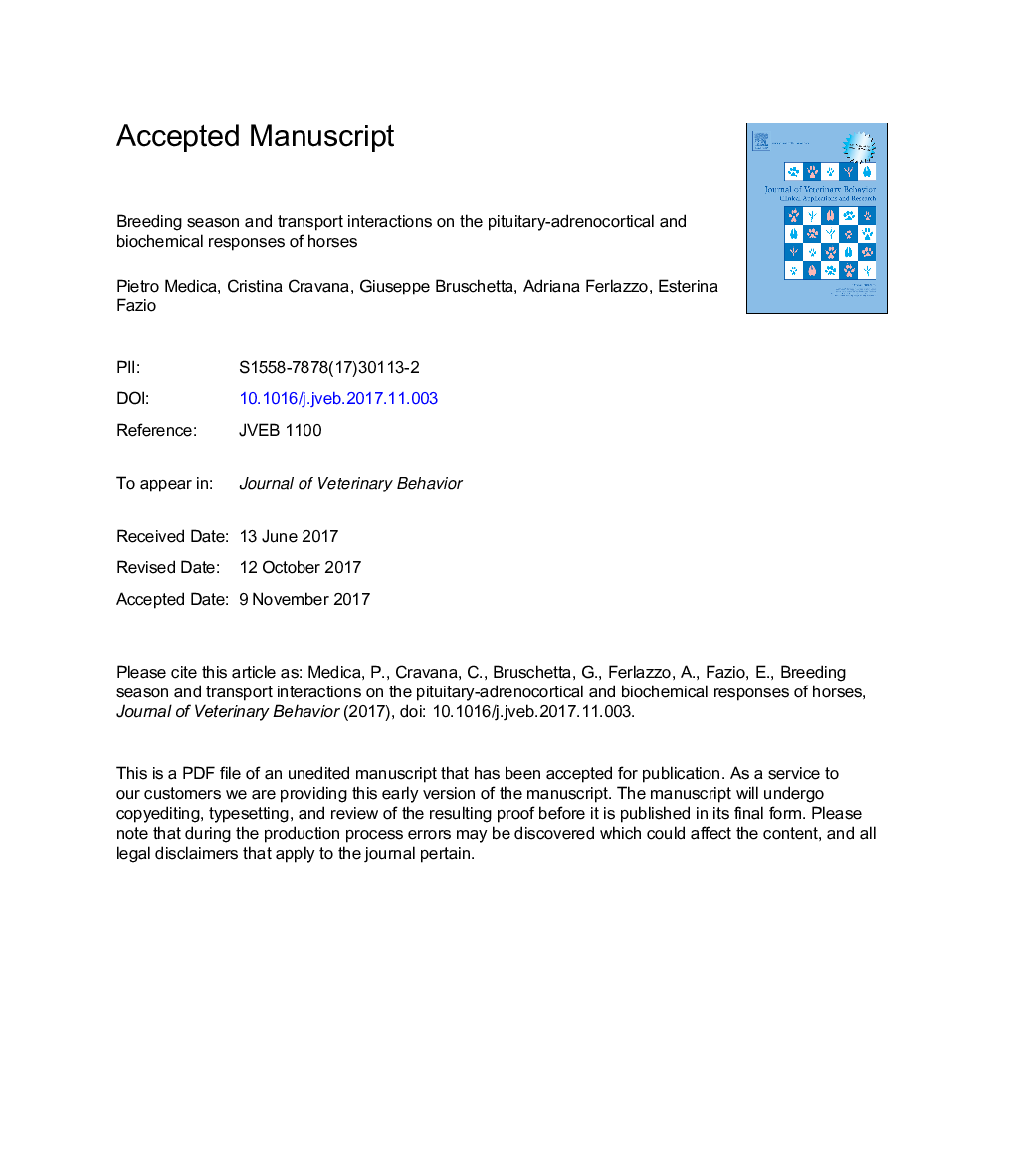| Article ID | Journal | Published Year | Pages | File Type |
|---|---|---|---|---|
| 8484209 | Journal of Veterinary Behavior: Clinical Applications and Research | 2018 | 26 Pages |
Abstract
The aim of this study was to investigate the circulating adrenocorticotropin and cortisol changes in breeding stallions in response to road transport before and after the breeding season. Creatinine, creatine kinase (CK), aspartate aminotransferase, alanine aminotransferase, urea, and lactate dehydrogenase changes were also considered. Twenty-seven healthy stallions were studied before and after transport over a distance of 200 km, before and after the breeding season. On the basis of the number of mares covered per stallion during the breeding season, each stallion was assigned to 2 groups: 17 stallions with a poor score, mean: 7.71 ± 4.67 mares per horse (group A); 10 stallions with a good score, mean: 35.50 ± 10.66 mares per horse (group B). Increases in circulating adrenocorticotropin concentrations were found after the first trip for group A stallions (P < 0.001), and after the first trip (P < 0.05) and return trip for group B stallions (P < 0.01). Increases in circulating cortisol concentrations were found after transport in both groups A and B (P < 0.001). Significant increases, as effect of the transport after the breeding season, were described for all biochemical parameters. Two-way ANOVA showed significant differences between groups A and B only for increases in cortisol and CK as an effect of posttransport plus the postbreeding season. This study showed that the pituitary-adrenocortical axis is efficiently stimulated by transport and that the breeding season augments the increase of cortisol and CK values of stallions as an effect of mental and physical arousal.
Related Topics
Life Sciences
Agricultural and Biological Sciences
Animal Science and Zoology
Authors
Pietro Medica, Cristina Cravana, Giuseppe Bruschetta, Adriana Ferlazzo, Esterina Fazio,
